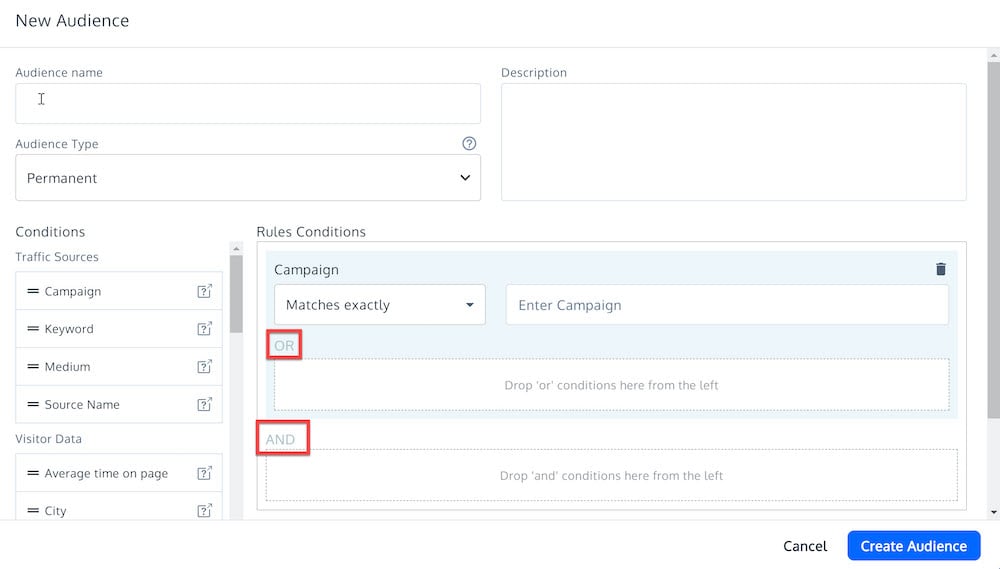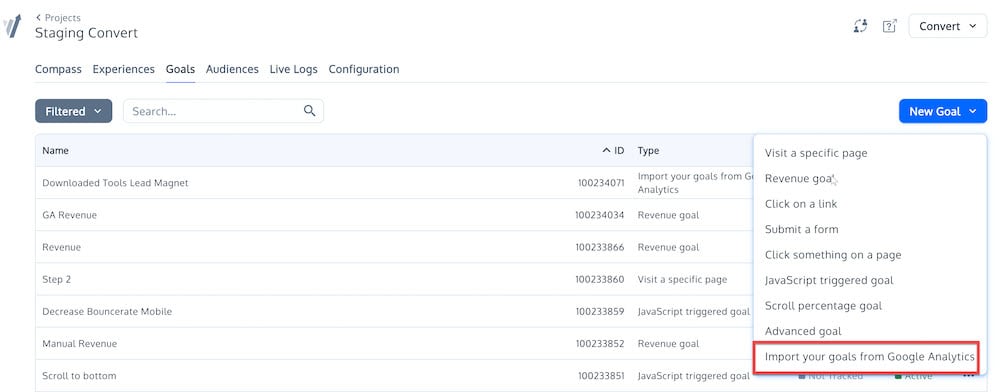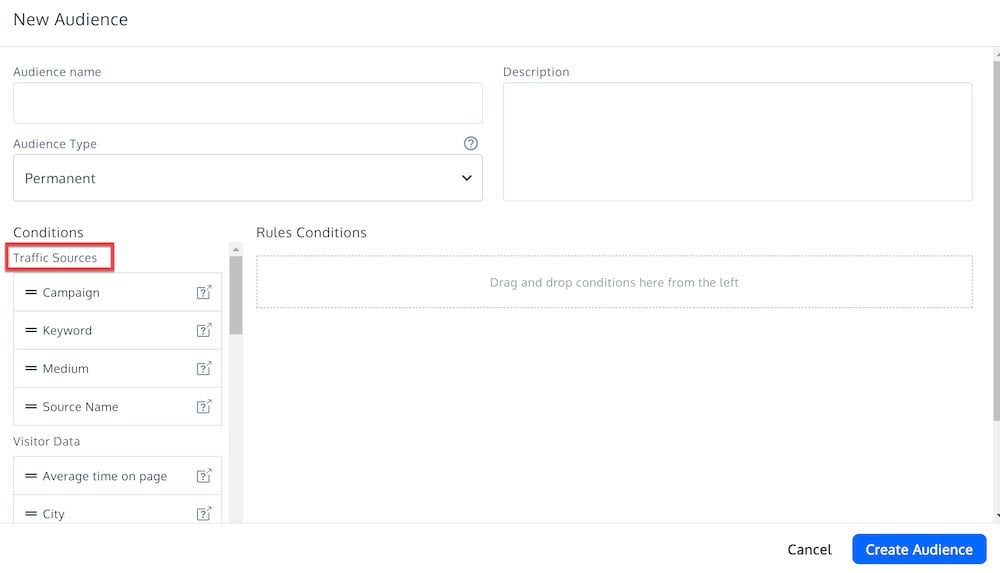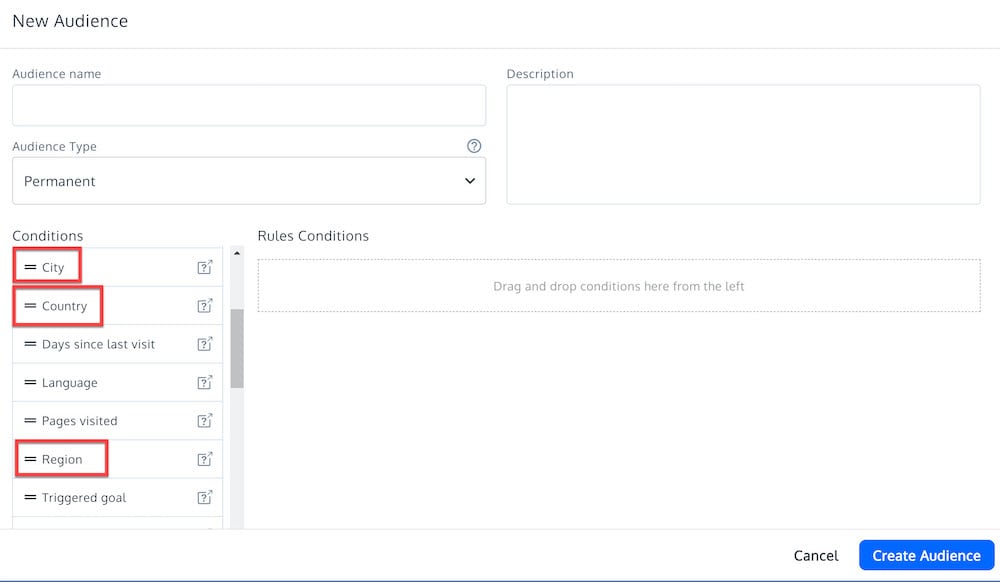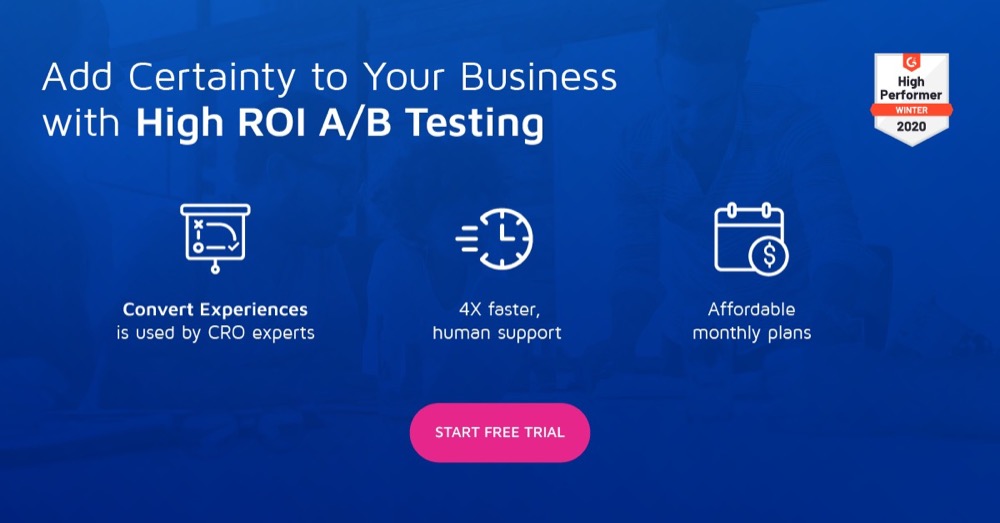Audience Targeting with A/B Testing: How Precise Can Your Audience Segments Get?
When experiments target the right audiences, they get better and more conclusive results.
For Ken Hanson, a Convert Experiences user, audience targeting didn’t just get better results, but 50 percent better results.
Here’s what happened…
Hanson wanted his users to leave reviews for their apartments. He hypothesized an experiment for the same that would show a review writing prompt to the visitors on the homepage.
But Hanson didn’t want to show the experiment to all his 900K users. He wanted to leave out those who had already reviewed. That’s why he analyzed his users and segmented them into two types – those who had posted their reviews and those who hadn’t.
Targeting audiences allowed him to “only expose the user on the homepage to an experiment that prompted them to write a review while excluding users that couldn’t write a review from the experiment (because they had already written one).”
With audience targeting, Hanson’s experiment converted 50% better generating 9k reviews within hours.
See how much more powerful an experiment can get with audience targeting?
Good…
Let’s now see some of the most effective ways of targeting audiences for running better experiments.
Audience Targeting Using Behavioral Data
Visitor behavioral data is a broad term and encompasses different data points for different businesses. But mostly it’s concerned with how a user behaves on a website or interacts with it.
Spending X minutes on a page, reading Y pages, reading a particular page Z or clicking a button on it are all actions that contribute to a user’s behavioral data profile.
Audience targeting using behavioral data lets you show your experiments only to users who exhibit a certain behavior.
So if your analysis shows that users who perform a certain action or a set of actions convert the best, you can set up an experiment targeting just the users who show that behavior.
Many behavioral targeting options are available for use right away in Convert Experiences. Others can be implemented with goals (more on this below). For instance, with Convert Experiences, you can show an experiment to a visitor who:
Is on their 3rd visit
AND
Is on the pricing page
AND
Has spent 5 minutes on it
OR
Has watched the features video
In addition to these and the many other user behavioral targeting conditions that can be set up within minutes with Convert Experiences, you also get to use custom Javascript if you want to target even more precisely (more on this below).
Audience Targeting Using Goals
Experiments that use goals-based audience targeting are great at boosting the revenue you generate from your visitors. This is so because they only target “qualified” users — based on the goals they’ve completed.
For example, if you’re a B2B business, you can set up an experiment only for the users who are on a certain plan of your service and exempt the rest.
Or, you can run an annual upgrade offer experiment only for users who have been on your monthly plan for, say, 5 months.
If you run an online store, you can set up
experiments targeted at just the users who have completed a purchase with you.
Or, more specifically those who did so in the last 3 months (because they’ll be
more likely to buy as compared to those who bought a year back a.k.a the
recency factor).
Note that because of the way Safari now works, the above two examples
specifically won’t be possible with it, unless you use custom tags. Alternatively, you can
choose to launch such experiments but include only your Chrome and Firefox
users, exempting the Safari ones (you can include/exclude users based on their
browsers).
Most of such goals can be easily defined in web analytics tools like Google Analytics (GA). In fact, if you use GA, Convert Experiences lets you import your GA goals with a single click. Once you’ve imported your goals (or set them up as goals in Convert Experiences itself), you can use goals completions for building your audiences to include or exclude from experiments.
Audience Targeting Using Visitor Source
Your visitors’ “source” offers rich contextual information about what brings them to your website. For example, if you’re a SaaS provider, visitors to your sign up page might come from varied sources:
- One could land on your page from your G2Crowd profile.
- Another one could arrive by clicking your Google ad.
- Yet another one could land on your page via a search engine.
Now, the motivations of a visitor whose source is a Google Ads campaign differ from those of a visitor whose source is a B2B marketplace.
Here’s where audience targeting helps: It lets you expose your Google Ads leads to an experiment aimed at making them convert better while excluding third-party referrals. It lets you do the reverse as well — exposing third-party referrals to an experiment and excluding paid leads.
… And so on.
Referring domains, campaigns, and medium (and the keywords or campaign terms) all work as excellent audience targeting tools for optimization experiments.
Conversion optimization tools like Convert Experiences use UTM parameters to understand the source of your visitors and then show them a certain experiment — or exclude them — based on your targeting rules.
Audience targeting helps expedite test results. See how Convert does it for you
Audience Targeting Using Geolocation
Geographic targeting — obvious as it may be — is effective for both B2C and B2B brands. You’ll most probably have to use this audience targeting condition in tandem with a bunch of other conditions.
If you’re a B2C brand, you could use geolocation targeting in many ways. You could use it to test free shipping offers for audiences from a certain geographical range.
Or you could use it to deliver personalized experiences where you say “Hey! We’re offering one-day delivery to [the visitor’s location] to all orders in the next 1 hour! Order now!”
… And so on.
Even as a B2B brand, you can use geolocation targeting effectively.
You could use it to test different messaging styles that could connect with the visitors based on their sensibilities. For example, you might target audiences from Europe hinting at a certain aspect of your business (like, say, privacy-friendliness) and choose some other approach for leads from the US. Sort of like the GDPR for Europe and CCPA for the US.
You could also set up experiments targeting different audience groups based on their locations and showing them pricing pages in their local currencies. The possibilities are huge with this targeting type.
Audience Targeting Based on Audience Exposure
If you run multiple experiments on your website and expose a user to all of them, you’ll find it difficult to attribute a conversion to a particular test.
Not just that, if you run multiple experiments across your website, you’ll invariably experience test interference and your results can get skewed.
To avoid this and help you maintain the integrity of your experiments’ results, for each experiment you run, you can choose to only target the visitors who haven’t been exposed to any other experiment. This is known as “Collision Avoidance” or “Collision Prevention.”
Targeting Even More Precisely With Custom Javascript
99 percent of the time, you’ll be able to target the audiences you want to expose your experiments to with the segments that Convert Experiences supports right out-of-the-box. (Note: This is true for most CRO tools if you’re on their six-figure annual enterprise plans.)
However, if you need to target even more precisely and have access to development resources, you can write your own Javascript code and enhance a tool’s default targeting capabilities.
Convert Experiences is a popular choice with businesses that need to use custom Javascript targeting and even with A/B test build development developers and agencies because our support for custom Javascript is far superior to that of most alternatives.
A Quick Note About Statistical Significance…
If you run experiments with broad segments – such as running an A/B test on all new visitors or on returning visitors, you can get statistically significant results. Because both segments will usually have enough traffic.
This is true even for a mobile-first experiment where you target your mobile audience because you’ll likely have enough mobile traffic.
But in many audience targeting cases, achieving statistical significance may not be possible. For instance, if you want to target your users who have spent certain $$$ with you, you might not have thousands and thousands of users to route enough sample sizes to your original and challenger versions.
In these cases, you have to settle before reaching statistical significance. Though this shouldn’t disappoint you too much as most experiments (even with enough sample sizes) don’t reach the 95% statistical significance mark anyway.
This should also matter less if you intend to use audience segments only for personalizations aimed at improving your users’ experience with your website.
In General, if You Can Segment it… You Can Target it
With Convert Experiences (and most other CRO tools), you can combine conditions to drill down to the segment you wish to target.
For example, if you’re an online store and want to run a free shipping offer experiment to see if new visitors convert into customers with it, you can target a visitor who:
- Is from a certain geographic location (via geolocation targeting),
- Is new to your website (via visitor data targeting),
- And has a certain cart value (>XX) (via custom goals targeting).
Adding multiple audience targeting conditions won’t slow down your testing… but delivering the experience could. Because the experience you’ll have to design for such a visitor will differ significantly from your original version (or the control). Which means there will be more code to execute. However, a skilled developer can help you overcome this by optimizing your code.
So… ready to show your experiment only to “those” users and not everyone else? Sign up for a free Convert trial (no credit card needed and no forced upgrades for advanced targeting options; unlock full access in one easy pricing).
Written By
Disha Sharma

Edited By
Carmen Apostu

